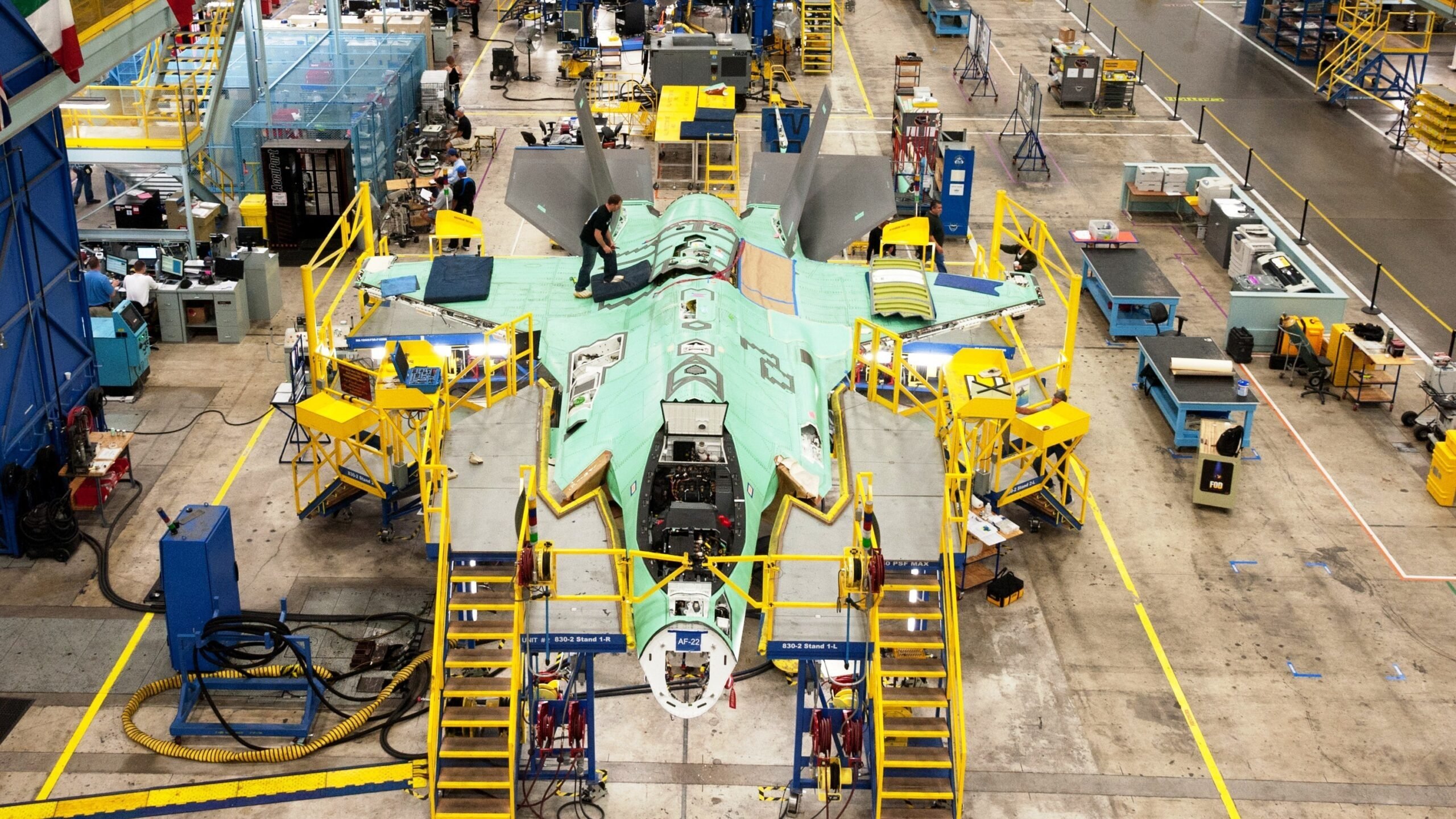
The Lockheed Martin Factory in Ft. Worth, Texas, in April 2012. (Fred Clingerman/Lockheed Martin via DVIDS)
The decision to add to or cut the total number of F-35s in America’s inventory is often viewed through strategic and budgetary lenses alone. But in this op-ed, labor leader Robert Martinez Jr. argues that lawmakers should remember another important group of stakeholders: the highly skilled American workers who build the high-tech jets.
For decades, Americans have watched our manufacturing sector move overseas. Many high-paying, skilled union jobs that form the backbone of families and communities across the country have disappeared as a result.
The defense industrial base has, in part, bucked this trend. The skilled manufacturing jobs it supports have largely remained here at home. But that doesn’t mean those jobs are safe forever.
While the recently released draft of the NDAA approves funding for additional F-35 aircraft, congressional appropriators are still considering cutting, rather than increasing, the number of F-35 Joint Strike Fighters in the defense spending bill now under consideration. Not only is this a bad move for national security, it’s bad for the hundreds of highly skilled union workers who day-in, day-out work to assemble the nation’s newest stealth fighter.
RELATED: Compromise NDAA released with $857.9 billion topline
Any F-35 procurement cut would constitute a direct hit on high-tech, high-paying union jobs around the country. Congress has a shrinking window within which it can reverse course and make the right investments in the F-35 program. That would preserve union jobs, sustain our defense industrial base, and bolster our national security.
The evidence for the F-35’s economic effect is clear. A recent analysis from AeroDynamic Advisory found that the F-35 contributes more than $72 billion annually to the US economy. That’s 10 percent higher than previously thought. The report states, “any additional investments or cuts to the program will result in significant impacts to the national defense industrial base.”
This is a no-brainer: Make additional investments, and make a positive impact to thousands of workers, small businesses, and communities around the nation. Make cuts and whittle away jobs and the economic impact they create.
The F-35 program supports more than 298,000 direct and indirect jobs in America. Those jobs include many Machinists Union jobs, from the F-35 primary production facility in Fort Worth, Tex., to the engine manufacturing facility in Middletown, Conn. From suppliers in West Palm Beach, Fla., to locations across California, the F-35 program supports families and the communities they live and work in throughout America.
These jobs must be sustained, and our defense industrial base preserved. If the procurement rate falls below 86 aircraft, it will result in significant job losses and degrade our defense industrial base and the supply chain that once built America’s thriving economy.
It’s puzzling why the US dithers on the F-35 while our allies and partners have not. In the past 18 months, Finland, Switzerland, Canada and Germany have all decided to buy F-35s because they know what the F-35 means for their nation’s security. In fact, the Swiss Government found that the F-35 provided the “highest overall benefit at the lowest overall cost.” So if our allies and partners understand the F-35’s value, why can’t Congress?
If 2022 has demonstrated anything, it’s that threats from our adversaries are not just imaginary. China has conducted missile drills to threaten Taiwan, and Russia has invaded Ukraine; North Korea and Iran are up to their usual bad behavior that threatens our interests and those of our allies and partners.
The F-35 is a key element in deterring these foes. But that means we need to buy more F-35s not just tomorrow, but today.
Now, some have argued we should slow the procurement rate until the F-35 modernization program, known as Block 4, is fully mature. That’s a recipe for disaster, because the Air Force already has the oldest and smallest fleet of fighters in its history. A recent Mitchell Institute report notes that today only 24 percent of the Air Force’s fighters are 5th generation.
The solution is very simple: Buy more F-35s – now. The aircraft can be upgraded relatively cheaply and quickly at a later date, when the technology is fully ready.
The choice for Congress is clear: Delay buying F-35s, and we as a nation are shooting ourselves in the foot. Restore F-35 purchases to planned levels, and we sustain good jobs, support our vital defense industrial base, and ensure our national security.
My union sisters and brothers on the F-35 assembly line and around the country give their all every day to provide our warfighters with the finest aircraft in the world so they can accomplish their missions and return home safely.
It’s time for Congress to show the F-35 workers the same degree of commitment and fully fund the F-35 — to preserve good jobs here at home while ensuring our national security.
Robert Martinez Jr., an aircraft assembler by trade and a US Naval Air veteran, is the international president of the 600,000-member International Association of Machinists and Aerospace Workers (IAM), the largest aerospace and defense labor union in the United States.






















